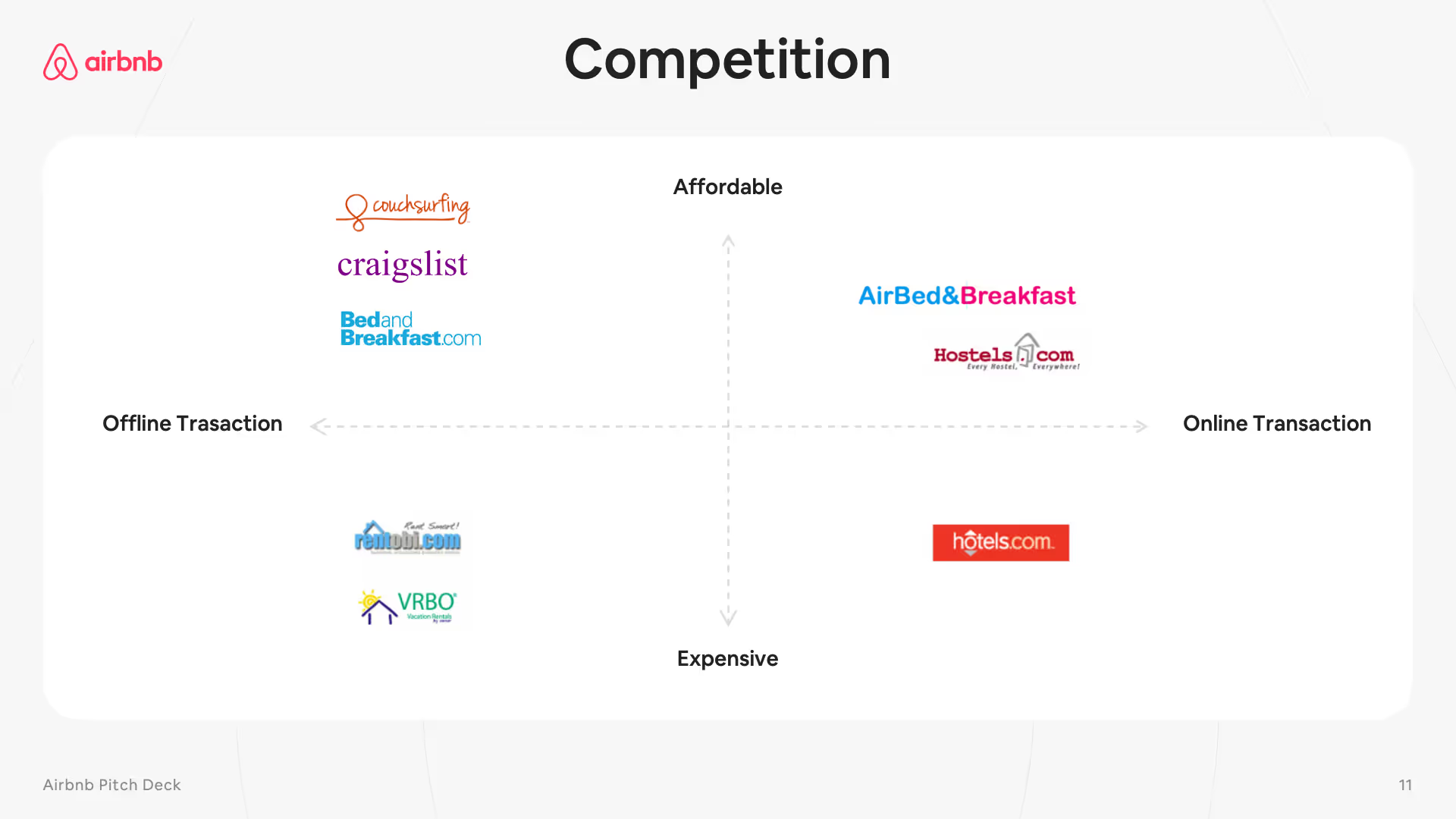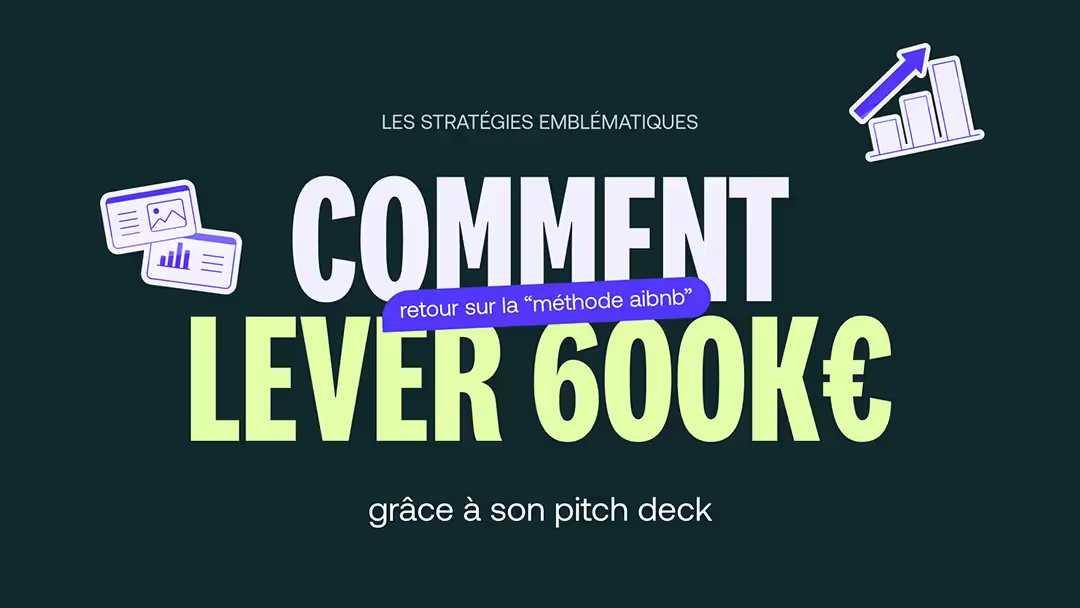Succeed in your pitch
Learning to communicate, persuade, and influence is one of the most essential skills for success in everyday life. In this article, we'll give you 10 actionable tips to excel in this exercise and raise funds.

Succeed in your pitch with our 10 tips
Speaking out to present your project is often a dreaded step. However, regardless of your profession, whether you work in business development, be an accountant, a freelancer, or an entrepreneur, you are always selling in one way or another, because you are always selling yourself, whether it's during a job interview, to sell your products and services, or even simply to sell your ideas and persuade others to see things from your perspective.
Learn to communicate, to Persuade and to Influencing is one of the most essential skills for success in everyday life. In this article, we'll give you 10 actionable tips to excel in this exercise and raise funds. So we are going to show you one of the easiest and most effective ways to Do a pitch elevator so you can start communicating your ideas much more clearly and get people to buy into your ideas.
Remember, what is a pitch and what is it for?
A good project can be defended. In the long run, in front of customers, but in front of investors and bankers.
A pitch is therefore a concise and persuasive oral presentation of an idea, a project, a product or a service, serving to convince an audience or decision-makers. This oral pitch can be accompanied by a visual representation called Pitch Deck; together, they are intriguing and interesting in order to capture the audience. The pitch must therefore be adapted to the specific audience for which it is intended and capture the interest and emotion of the audience.
Download the ultimate checklist for a successful pitch
Download link
Our 10 tips for a successful pitch
To help you excel at presenting and pitching, we've identified 10 top tips you can follow to be more convincing.
Identify a problem and propose a solution to fix it
For your speech to have a real impact, it is crucial to first address a specific problem faced by consumers.
You need to highlight the needs or challenges they face. Next, present how your business/project proposes to solve this problem. Evoking a concrete problem makes it possible to involve the audience and to get rid of an overly theoretical aspect of the project. It is therefore essential to clearly describe your solution, explaining in detail what it is, how it works, and why it adequately meets customer needs.
Always remember to illustrate your words, so that the solution seems logical and adequate to the problem stated.
Ask yourself who? What? How? When? For whom?
One Good pitch requires careful preparation; arguments must be carefully structured for them to be effective. It must answer the five essential questions: “Who? What? How? When? For whom? ”. Clearly mention your target audience, products, and the type of help you're looking for, all while using short, easy to understand sentences.
How to present? Maintain a professional and unflinching attitude while remaining outgoing and friendly, and show that you know your subject by heart; incorporate relevant data to enrich your pitch if it is meaningful and get rid of your notes.
Do you want to be on top? To properly prepare your pitch, here are some key questions to consider:
- Who is your Pitch ?
- What do you suggest to your interlocutor?
- What is the main objective of your pitch?
- What do you hope to get out of this meeting?
By answering these questions, you will be able to structure your pitch in order to capture the interest of your audience and convince them of the value of your proposal.

Put the double bites on the hook
The first thing to understand is to be able to present your product, service, or idea in a single sentence. It should be as persuasive as possible.
The aim is to quickly and easily show your audience who you are, what you do, and how you provide value.
The easiest way to pitch in one sentence is to use the following formula: “I'm helping X reach Y by doing Z.”
A very simple structure, in one sentence, where X will be your audience, your prospects, your future investors, in short, the people you are talking to.
Y is the value you provide and Z is how you provide that value.
An example of using this formula would be: “I help physical stores in downtown create massive new revenue streams by selling their products online using paid advertising.”
Whatever product or service you're pitching, you need to follow this simple formula and fill in the blanks so people understand exactly what you're doing.
The next step in the pitch elevator is to tell a story, to do storytelling as they say in the marketing and communication world.
Tell a concrete anecdote to highlight the service provided by your product or service. Starting from a specific case or lived experience, you can create an emotional connection with your audience and bring them into your story.
Using metaphors or comparisons can also be very effective in making your message more accessible and memorable. A well-chosen metaphor can simplify complex concepts and allow your audience to better understand and remember what you're talking about.
Otherwise, feel free to include a reference to current events in your catchphrase to immediately capture the attention of your audience and make your pitch more relevant and interesting. Good storytelling, which includes current elements, shows that you are in tune with the world around you and prevents your audience from getting bored.
In summary, be concise, you need to be able to present your business in a single sentence. Remember: I'm helping X reach Y by doing Z. In a second step, try to find an original hook, whether through a personal story, a metaphor or a reference to current events, you increase your chances of captivating and convincing your audience from the very first seconds of your pitch.
Give particular importance to the choice of words
The choice of words in a pitch is crucial, as time is limited and there is no room for improvisation. Each word should be carefully selected to be as relevant and compelling as possible, in order to maximize the effectiveness of both oral and written presentation. Since you only have a few minutes to convince your audience, it is essential to optimize every second.
To do this, we recommend that you write your speech in advance. This will allow you to find the most compelling formulations and ensure that each word contributes to conveying your message clearly and concisely. By writing your speech, you can better synthesize your ideas, structure your arguments logically, and choose words accurately to avoid ambiguity or waste of time.
Additionally, pre-writing your speech gives you the opportunity to review and refine it, ensuring that each sentence has maximum impact. It also helps you remember your pitch, which increases your confidence during the presentation and allows you to focus more on engaging with your audience rather than looking for your words. In short, investing time in writing and reviewing your pitch is an essential step in ensuring that your message is powerful and convincing.
Work on your non-verbal language
Nonverbal language plays a crucial role in a pitch because it can reinforce or weaken your verbal message. Your posture, gestures, facial expressions, and eye contact are all elements that communicate your confidence and commitment.
Therefore, adopt an open and upright posture to show confidence and avoid relying on notes during your presentation in order to maintain an impression of naturalness, trust, and professionalism. In addition, use natural gestures to accompany and emphasize your words, but avoid excessive movements that could distract.
Smile at your audience: A genuine smile can create a positive connection with your audience, while regular eye contact shows that you are engaged and attentive to their feedback.
Remember that your voice is also a part of non-verbal language: vary your tone, pace, and volume to maintain interest and convey enthusiasm.
By mastering these aspects, you can make your pitch more dynamic, compelling, and memorable.
Do not neglect your presentation medium: the pitch deck
A pitch deck, also known as a “flight bridge” or “launch presentation,” is the visual support for your speech. In this format, you generally have about twenty minutes to explain your solution.
During this time, you should clearly articulate the problem identified, the proposed solution, and the process followed to get there. The aim is to engage your audience in your storytelling and convince them of the credibility and feasibility of your proposal. To maintain attention and avoid boredom, you can use a variety of media such as videos, sounds, photos, infographics, or animations. However, remember to include numbers and written information to solidify your arguments, as the ultimate goal is to persuade and secure funding.

Adapt your speech to the target
The real key to success in a successful pitch is personalization. It is a safe bet that you will have to give your oral presentation in front of many market players, all different and all with different goals and expectations. The banker will focus on profitability, the customer will want to know more about the products and services offered, and the future partner will want to know your vision and passion.
You can't expect the same presentation to captivate them all equally. You must therefore reinforce its impact by addressing each of your interlocutors individually, by touching their sensitivity and by understanding their desires.
Use active listening to identify personalities and needs, build a personalized speech that makes sense for everyone.
To fully adapt the experience to each of your representations, you can use a modular visual medium such as a interactive presentation which will allow you to create different presentation “paths” and to follow the most suitable one according to your interlocutor.
Don't be shy, show your personality
Often, you don't buy a product, you buy an emotion. You validate a personality.
Your personality is your greatest strength, your number 1 differentiating asset. Maybe you offer the same service as your neighbor, but you are not the neighbor. Emphasize this point, learn to express yourself and to become a good orator, the one who will put you in the center of the stage.
Being comfortable in front of investors, knowing how to talk about your project, or even knowing how to convince an unknown audience is never easy, however, your charisma can help you sell, as long as you understand its power.
A pitch is not fixed in time, it evolves
During your financial and entrepreneurial journeys, you will constantly have the opportunity to improve your offer and change various parameters. Your product is just like you; it evolves over time and gets better with experience.
Your business model may be questioned by a banker, your company presentation may be modified following advice on your oral fluency or your speaking skills, your PowerPoint slides will change location or aspects depending on the person you are talking to, etc.
Your speeches will be more natural, without stage fright, your non-verbal communication and your gestures will be more relaxed; captivating your audience will no longer be so difficult.
Your presentations will change, as will you. Don't set anything in stone, don't be afraid to start over, to modify, to refine, to remove.
Through increased and consolidated self-confidence over time, your storytelling will improve and your pitch will only become better.
Remember to network and maintain contact with investors
The pre-pitch and the pitch are good, but don't forget the after and the opportunities it can bring you.
Selling yourself well during the pitch is good, but maintaining contact afterwards, so as not to miss anything with your prospects, is better. A compelling presentation is only the start of the process.
Send your prospects regular updates on the progress of your project, respond promptly to their questions and invitations, and look for informal meetings to strengthen the relationships made during the pitch. This approach shows your commitment and seriousness, while keeping your project in the minds of investors. By maintaining an open and constant dialogue, you increase your chances of turning an initial interest into a solid and lasting partnership.

To finish...
The art of pitching is finally the art of speaking in public. A convincing pitch is based on careful preparation of the business plan and clear and effective verbal communication. Speaking in front of an audience requires fluency and a good command of oral communication, whether verbal or non-verbal. Speakers need to know how to use their body language, manage silences, and adapt their speech to their audience to captivate and convince.
Public speaking training or communication coaching can greatly improve your skills. Learning to present effectively, breathe properly, and use non-verbal expression techniques, such as intonation and gestures, is crucial to engaging your audience. In addition, knowing how to present your project in a synthetic and powerful way is essential to convince your interlocutors, whether to raise funds, present a startup or convince a recruiter.
Improvisation can have its place, but a good presentation depends on careful preparation. Use practical exercises and scenarios to improve your speaking skills. Incorporating visual and interactive elements can help maintain audience interest. During your oral intervention, start your speech in a catchy manner and structure your arguments to maximize impact.
In short, a successful pitch requires good preparation, effective communication and the ability to express yourself with ease in front of an audience. Whether you are presenting your business, a creative project, or your team, the objective is to convince your audience of the relevance and effectiveness of your proposal. Mastering these skills will help you become a confident and convincing speaker who can captivate and persuade your audience every time they speak.
Our sources:
Ce qu'il faut retenir
What you need to remember:
- Identify a problem and propose a solution : Address a specific consumer problem and clearly present how your business/project proposes to solve it.
- Take care of the grip : Present your product or service in a single persuasive sentence and tell a story to captivate the audience.
- Choose your words carefully : Each word should be relevant and compelling. Prepare and review your speech in advance to maximize impact.
- Work on your non-verbal language : Use an open posture, natural gestures, and vary the tone of your voice to reinforce your message.
- Use a pitch deck : Support your speech with clear and engaging visual support, including figures and a variety of media.
- Adapt your speech to the target : Customize your pitch according to your specific audience, by understanding their needs and expectations.
- Show your personality : Your personality is your differentiator. Be authentic and charismatic to create an emotional connection.
- Make your pitch evolve : Continuously improve and adapt your presentation based on feedback and the evolution of your project.
- Network and maintain contact : After the pitch, keep in touch with investors and prospects by providing regular updates and looking for opportunities for informal meetings.



